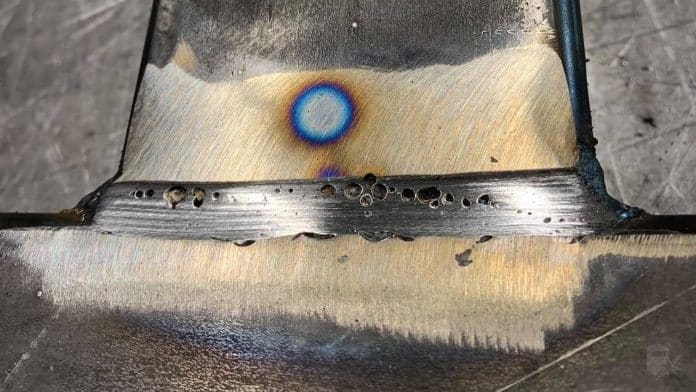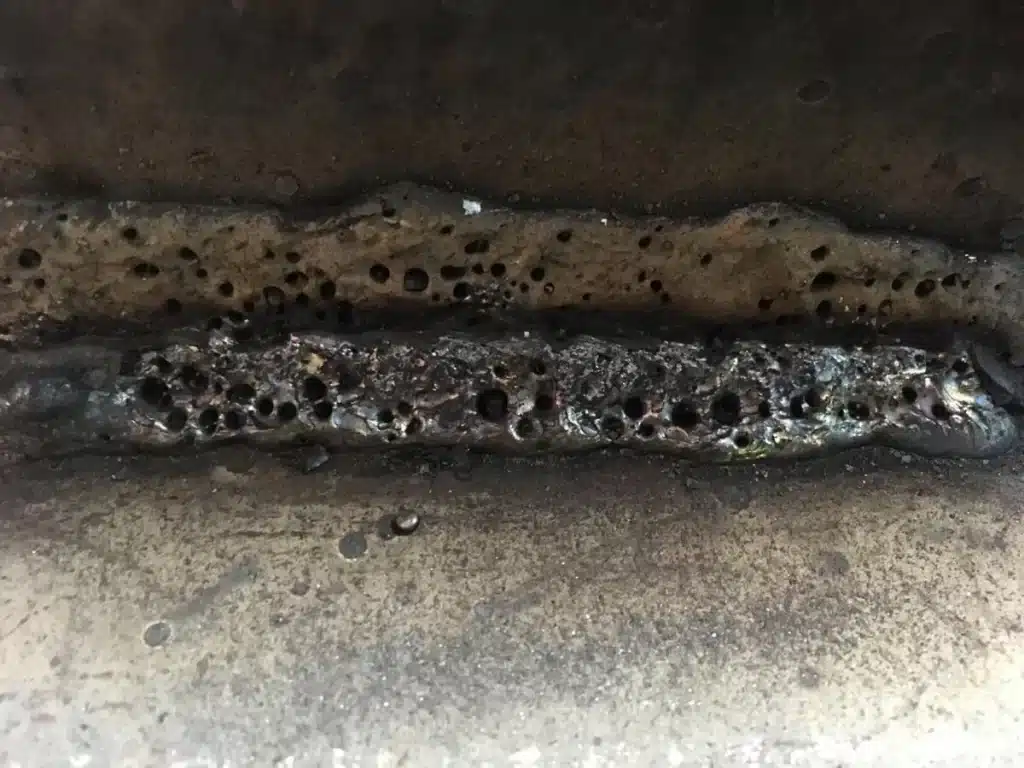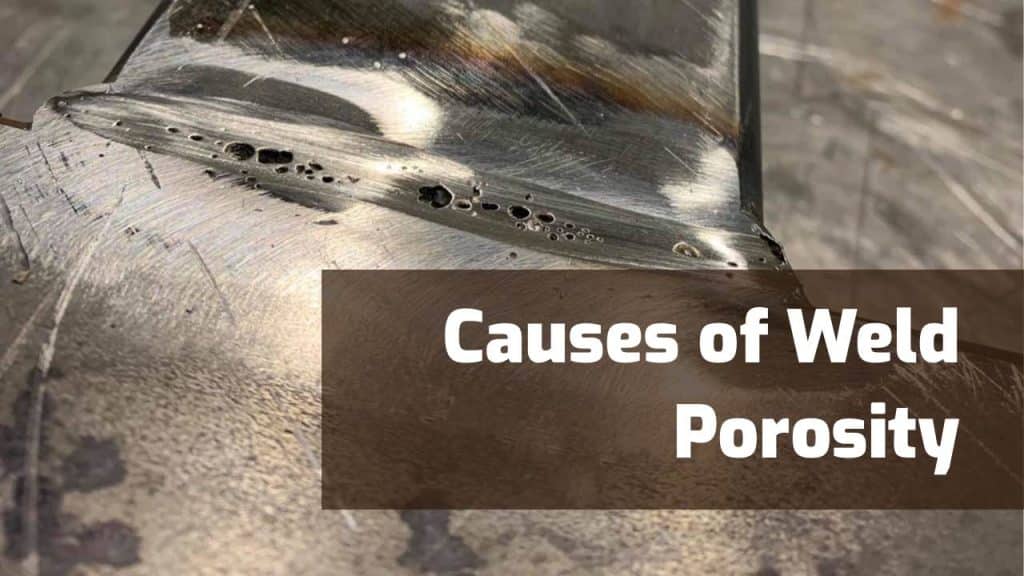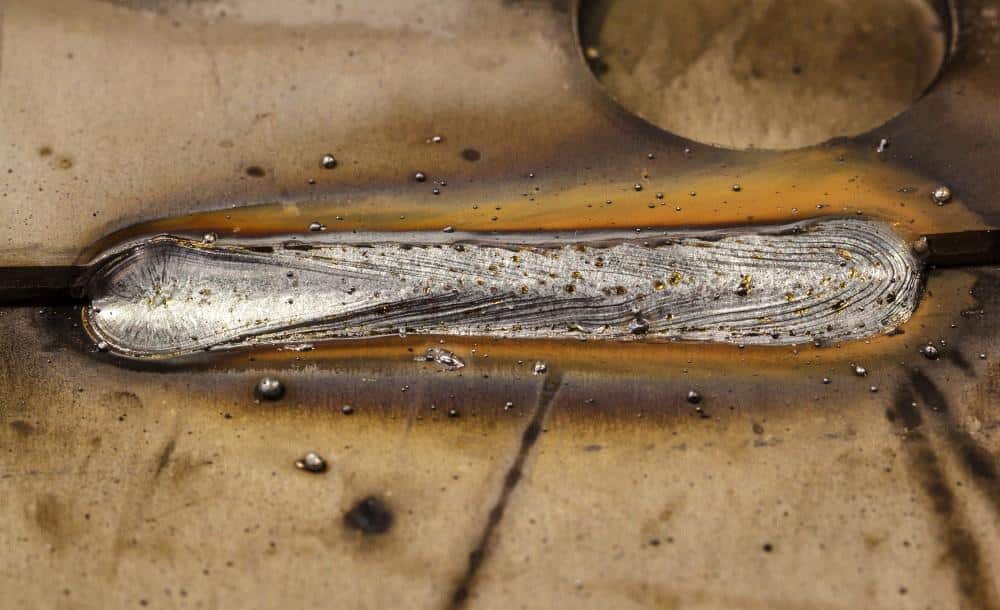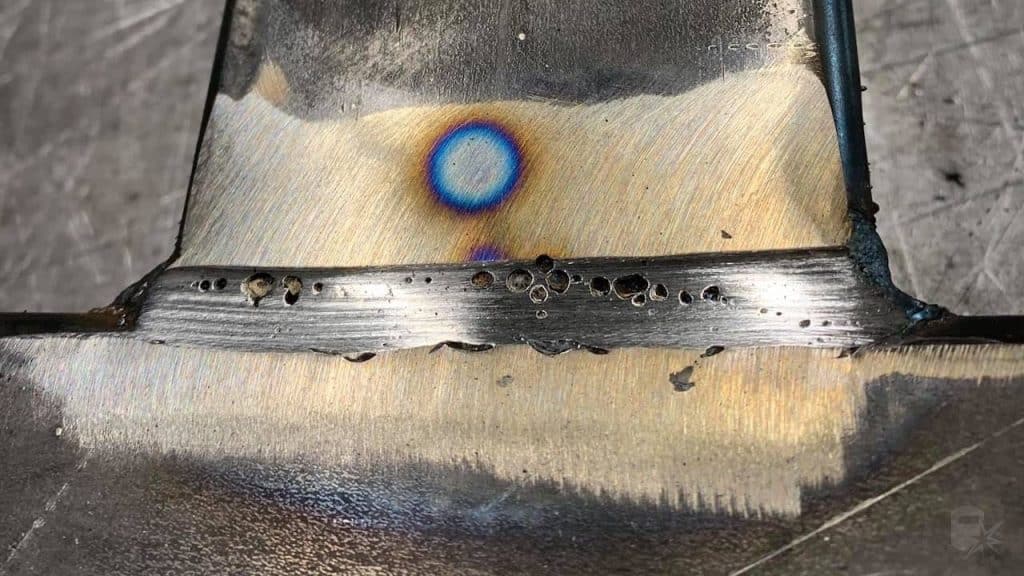Weld porosity can be a frustrating challenge for any welder, leading to weakened joints and compromised structural integrity. But fear not, as we are here to shed light on the age-old question: how can one effectively prevent weld porosity? In this article, we will explore a variety of techniques and precautions that can be taken to ensure a clean and flawless weld, from proper material preparation to meticulous welding parameters. So, grab your welding helmet and let’s dive into the world of weld porosity prevention!
This image is property of thumb.tildacdn.com.
Review contents
Understanding Weld Porosity
Weld porosity refers to the presence of small cavities or voids in a welded joint. These cavities are caused by the entrapment of gas bubbles during the solidification process of the weld. The formation of porosity can greatly affect the structural integrity and mechanical properties of the weld, leading to reduced strength and potential failure under load.
Causes of Weld Porosity
Weld porosity can occur due to various factors, including improper weld preparation, incorrect welding parameters, and inadequate shielding gas usage. One common cause is inadequate surface cleaning, which allows contaminants such as oil, grease, or rust to be trapped in the weld pool, resulting in porosity. Another cause is insufficient shielding gas coverage, leading to the contamination of the molten metal with atmospheric gases.
Consequences of Weld Porosity
The presence of weld porosity can have detrimental effects on the performance of the weld. It reduces the strength and ductility of the joint, making it more susceptible to cracking and failure. Porosity also creates stress concentration points within the weld, which can initiate fatigue cracks and further compromise the integrity of the structure. Therefore, preventing weld porosity is crucial in ensuring the reliability and durability of welded components.
Pre-Welding Preparations
To prevent weld porosity, several measures can be taken during the pre-welding stage. Selecting the appropriate welding process is essential, as different processes have varying levels of susceptibility to porosity. Proper surface cleaning is crucial to remove any contaminants that can contribute to the formation of porosity. Additionally, ensuring optimal joint fit-up helps in achieving better weld penetration and minimizing the chances of porosity formation.
This image is property of weldguru.com.
Choosing the Right Filler Material
The filler material used in welding plays a crucial role in preventing weld porosity. Selecting a filler material compatible with the base metal is essential to achieve a sound weld without porosity. Understanding the characteristics of different filler materials and their compatibility with the base metal is necessary for making the right choice. Additionally, familiarity with gas metal arc welding (GMAW), gas tungsten arc welding (GTAW), and flux-cored arc welding (FCAW) processes aids in selecting the most appropriate process for minimizing porosity.
Optimizing Welding Parameters
Properly setting and controlling welding parameters is vital in preventing weld porosity. Maintaining a suitable arc length and voltage ensures the proper melting of the filler material and base metal, reducing the chances of porosity formation. Controlling the travel speed within the recommended range is essential for achieving sufficient heat input, which helps in preventing porosity. Furthermore, adjusting the shielding gas flow rate ensures adequate protection of the weld pool, minimizing the risk of gas contamination and subsequent porosity.
This image is property of cdn.thefabricator.com.
Proper Shielding Gas Usage
The choice and effective use of shielding gas are essential steps in preventing weld porosity. Selecting the correct type of shielding gas for the specific welding process and base metal is crucial. Inadequate or incorrect shielding gas can lead to contamination, resulting in porosity formation. It is imperative to avoid gas contamination by ensuring a clean gas supply and using proper gas flow techniques. Consistently maintaining the appropriate gas flow rate throughout the welding process helps in preventing porosity and achieving high-quality welds.
Controlled Electrode Handling
Proper handling and maintenance of electrodes contribute significantly to preventing weld porosity. Electrodes should be properly reconditioned before use to remove any surface contaminants and ensure optimal performance. Storing electrodes in appropriate conditions, such as a dry and clean environment, prevents moisture absorption, which can lead to porosity formation. Additionally, avoiding electrode contamination by preventing contact with oil, grease, or other contaminants is crucial in achieving porosity-free welds.
This image is property of weldguru.com.
Effective Gas Clearance Techniques
Implementing effective gas clearance techniques is essential in preventing internal porosity. Back purging, where a flow of inert gas is introduced behind the weld joint to purge out any unwanted gases, is an effective method to prevent porosity in closed or sealed joints. Additionally, employing proper groove design and joint geometry helps in ensuring adequate gas flow and preventing gas trapping, reducing the chances of porosity formation.
Appropriate Usage of Welding Techniques
Selecting the correct welding technique for the specific application is crucial in minimizing the occurrence of weld porosity. Each welding technique has different requirements and characteristics that can affect porosity formation. Avoiding excessive heat input by properly controlling the welding parameters helps in preventing porosity. Using intermittent welding techniques, such as stitch welding, helps in improving gas escape and reducing the chances of porosity formation.
This image is property of weldinganswers.com.
Quality Control and Inspection
Implementing a robust quality control and inspection process is essential for detecting and preventing weld porosity. Regular visual inspection during welding helps identify any signs of porosity formation early on, allowing for immediate corrective actions. Non-destructive testing methods, such as ultrasonic testing or X-ray inspection, can be employed to detect and evaluate porosity in the weld. Post-welding surface treatments, such as grinding or polishing, can also be applied to minimize defects and improve the overall quality of the weld.
Training and Skill Development
To ensure the prevention of weld porosity, comprehensive training on welding techniques is necessary. Welders should be well-versed in the different welding processes, their characteristics, and their susceptibility to porosity. Providing training on proper surface cleaning, electrode handling, and gas flow techniques equips welders with the necessary knowledge and skills to prevent porosity formation. Continuous improvement through practice and feedback helps in refining their welding skills and minimizing the chances of porosity in their welds.
In conclusion, preventing weld porosity requires a combination of proper pre-welding preparations, suitable filler material selection, optimization of welding parameters, effective shielding gas usage, controlled electrode handling, and the use of appropriate welding techniques. Additionally, implementing quality control measures and providing comprehensive training to welders are crucial in achieving porosity-free welds. By following these guidelines and taking the necessary precautions, weld porosity can be minimized, ensuring the integrity and reliability of welded structures and components.

